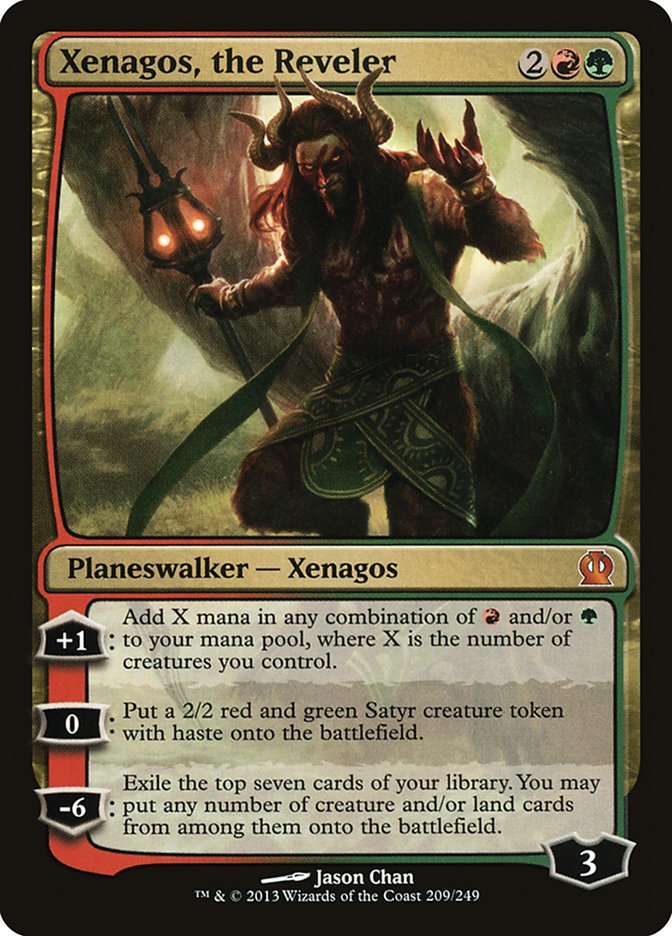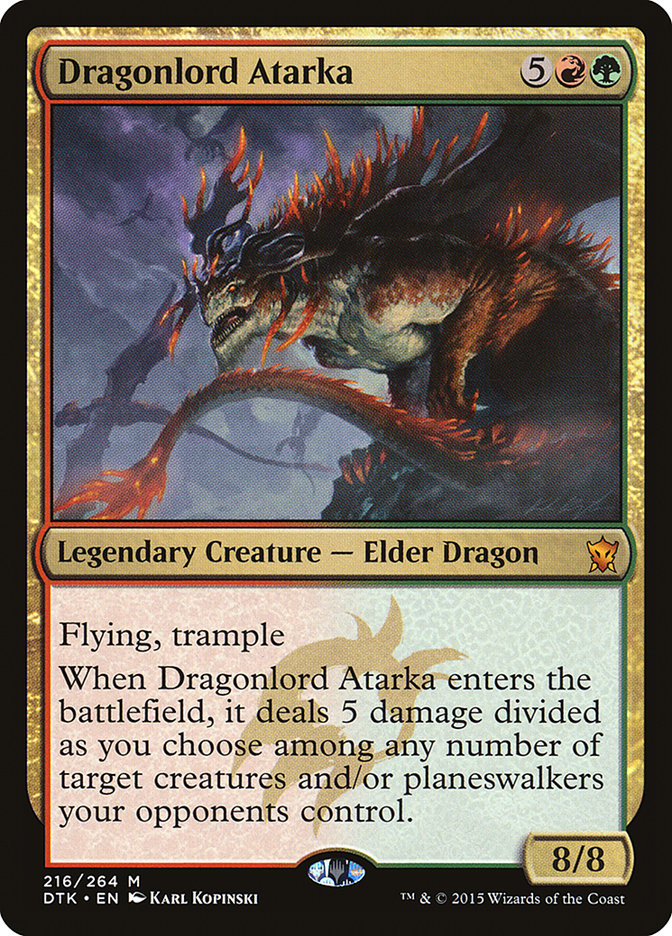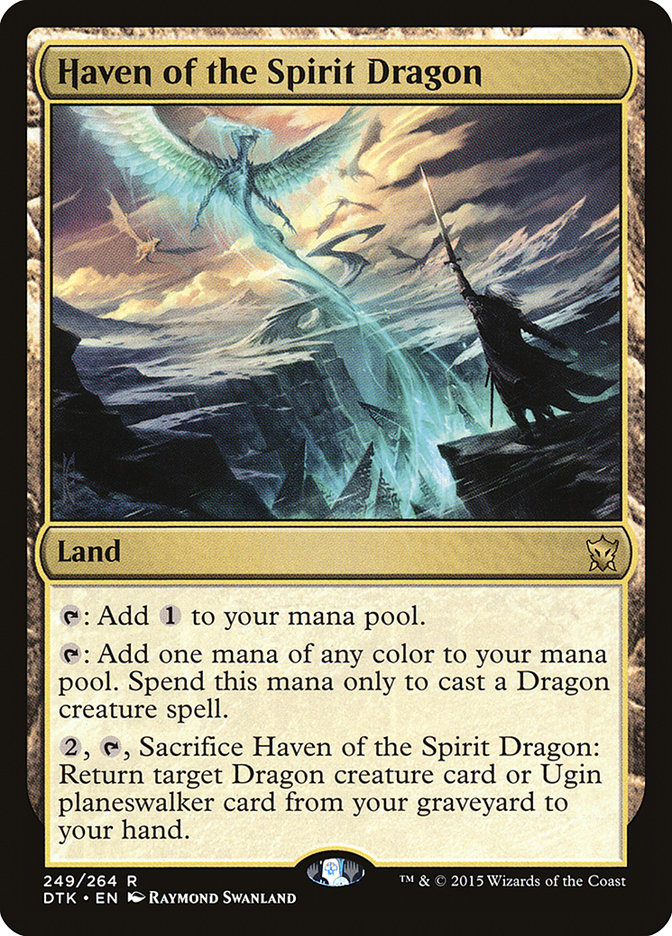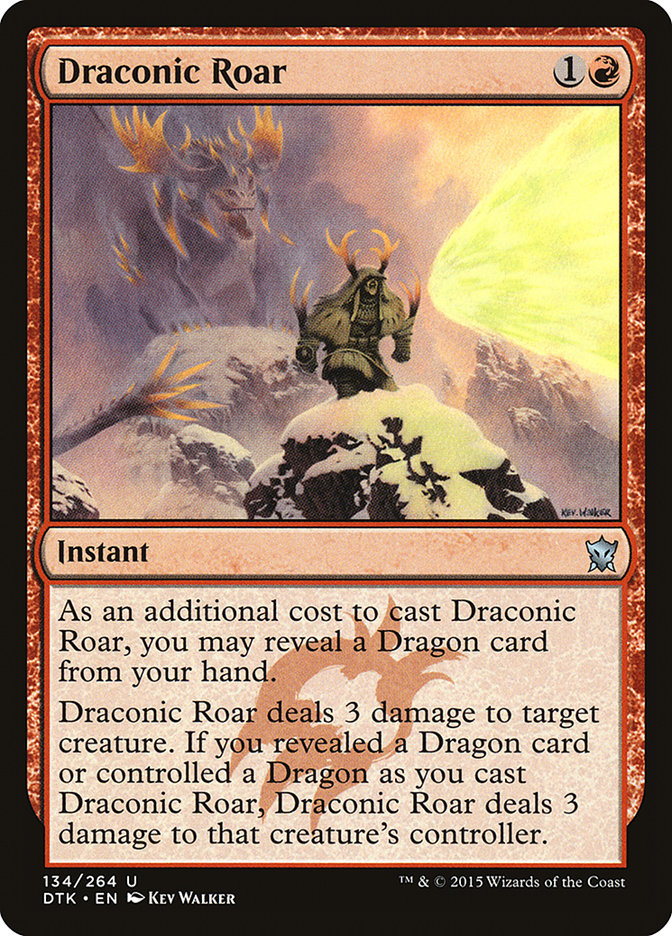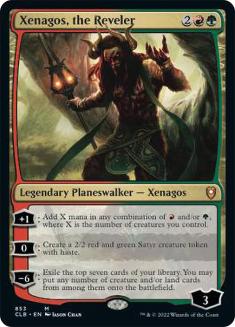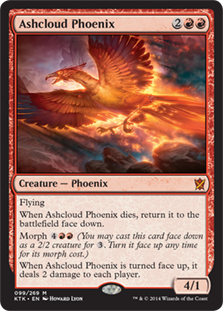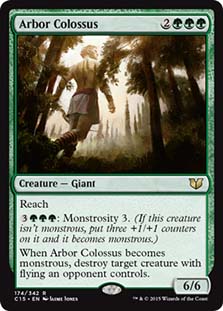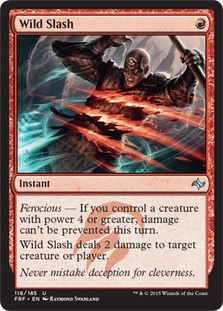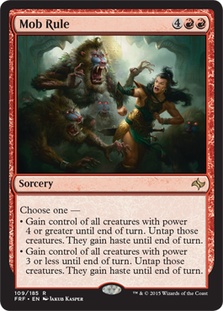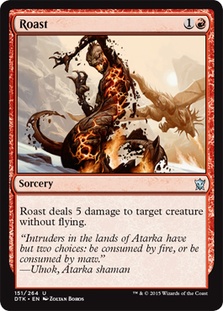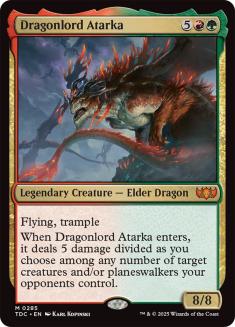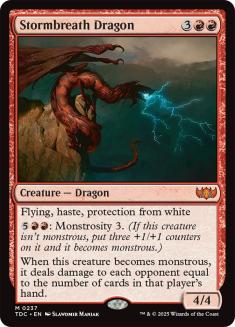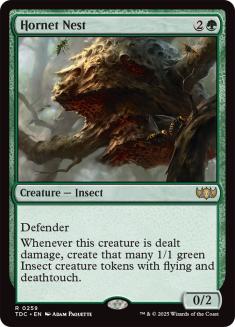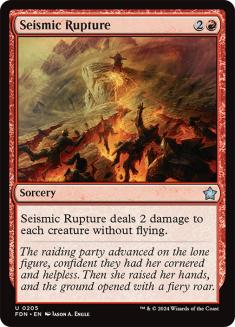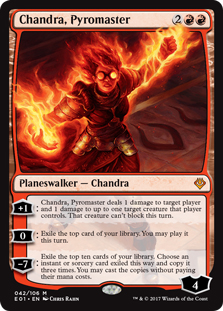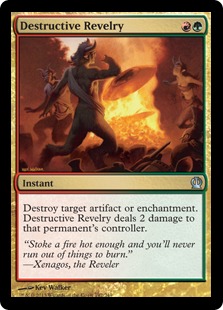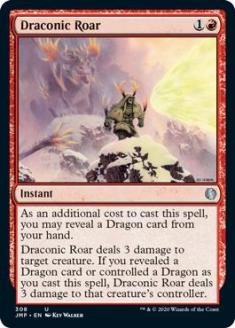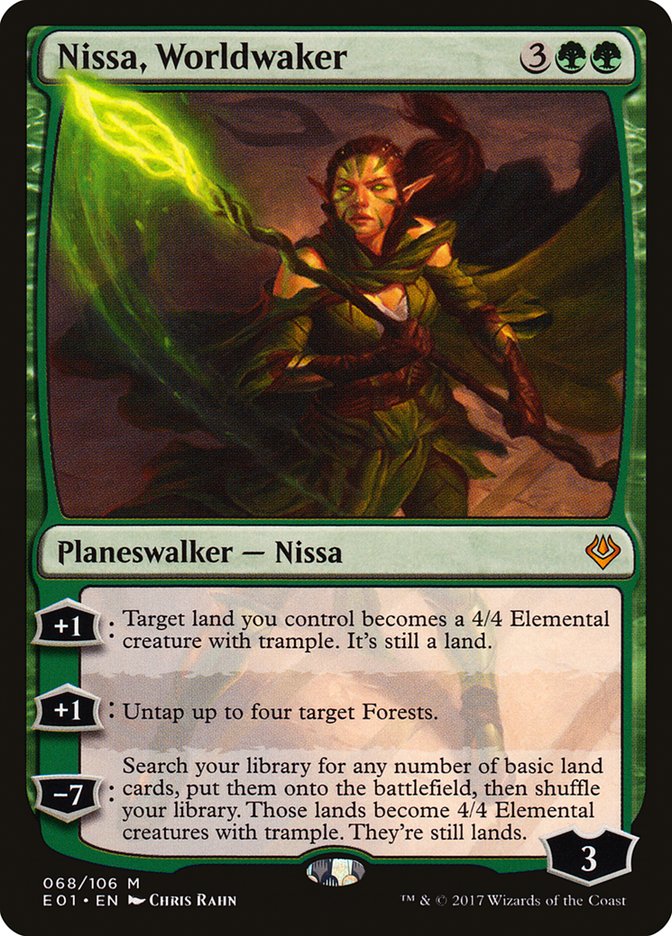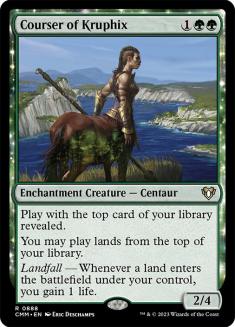I knew that I was going to be on G/R Aggro last week when I wrote my article , but I just wasn’t sure what build. There were quite a few different builds out there, and
everyone I talked to had differing views of what cards would be good and what direction to take the deck.
My initial observation was that I didn’t like Goblin Rabblemaster anymore. There were quite a few problems with the card for me. Yes, it would get you some
free wins if you played it on turn 2 or 3 and our opponent didn’t have an answer for it, but let’s be real. People are ready for Goblin Rabblemaster. Wild
Slash is everywhere, and people sideboard differently on the play or the draw based solely around the existence of Goblin Rabblemaster.
The card is great, but it’s not doing what I need it to in the deck and is lacking an important piece of support.
When I jammed Goblin Rabblemaster into my Jund Monsters deck last year and won the Standard Open at the Season Three Invitational, it was fully because of
Ghor-Clan Rampager. You had the small percentage of games where Rabblemaster was uncontested and didn’t need help, but in those games where it did,
Ghor-Clan Rampager was the best. It wasn’t just because of the huge stat increase with +4/+4 or the damage with trample, but because Ghor-Clan Rampager was
at worst a 4/4 trample for 2RG. The “help” cards now for Goblin Rabblemaster are our burn spells, which we can’t really afford to sling all
willy-nilly. They are effective at what they do but quite narrow, and if we use a Roast too early to clear the way for our Goblin Rabblemaster, then we may
end up just losing to a Brimaz, King of Oreskos or the like.
The cards in G/R Aggro all facilitate an extremely strong mid and lategame, so playing a card like Goblin Rabblemaster that is a 10/10 early and a 3/10 mid
and late just doesn’t really make that much sense.
My first inclination of a three-drop to replace Goblin Rabblemaster was Deathmist Raptor. I knew that Anthony Lowry had played it at the Season One
Invitational, and with the mindset of moving away from Goblin Rabblemaster to a three-drop that could still be aggressive but help bridge the gap to our
midgame against the aggressive decks. I also really liked that Deathmist Raptor had some utility against the control decks, and it did a real good job of
grinding it out against the midrange decks. Including Deathmist Raptor also solidified my idea of going with Ashcloud Phoenix over Surrak, the Hunt Caller.
Here is what the deck looked like early on in the week:
Creatures (29)
- 4 Elvish Mystic
- 4 Stormbreath Dragon
- 3 Boon Satyr
- 4 Rattleclaw Mystic
- 3 Heir of the Wilds
- 3 Ashcloud Phoenix
- 4 Thunderbreak Regent
- 4 Deathmist Raptor
Lands (23)
Spells (8)

This deck seemed really sweet in theory. We had the same ramp ability of the other G/R Aggro decks, but we also had a really resilient long game with
Deathmist Raptor and Ashcloud Phoenix. With Rattleclaw Mystic, Ashcloud Phoenix, and the Raptor itself, we had quite a few morph creatures to bring back
the Raptors from our graveyard.
I hadn’t had a chance to play any games with the deck since I was planning on testing that evening with my roommate Stephen Horne, but during the day at
work I came across Seth Manfield’s G/R Aggro deck from the Season One Invitational in his article.
I really liked how his list could just go bigger than everyone else with Dragonlord Atarka. Having Xenagos, the Reveler also helped this plan of going big,
and if you’ve ever had multiple-spell turns fueled by Xenagos, the Reveler, you know exactly what I’m talking about. It also helps that Xenagos, the
Reveler is a great threat against any of the control strategies that might crop up.
Seth also expressed a lot of the same thoughts that I had, with Surrak, the Hunt Caller being underwhelming and that Draconic Roar made the deck possible.
He even goes so far as to exclaim that playing less than four copies of the card is crazy, and I definitely agree.
That night I proxied up Seth’s deck and played a bunch of games with it and instantly fell in love. Xenagos, the Reveler is just as great as he’s ever
been, Draconic Roar does so much incidental damage while we are getting to our Dragons that just a couple hits kills them, and Dragonlord Atarka is
basically unbeatable once we cast her.
There were two things that stood out to me while I was playing the deck:
First off, Haven of the Spirit Dragon is busted. I tried really hard to talk myself into playing four in our final version of the deck, but I went with
Anthony’s suggestion of the sixth Forest. I can definitely see myself playing four at some point. Yes, it can put some strain on your non-Dragon spells,
primarily Ashcloud Phoenix, but the upside of the card is insane. Sequencing your lands properly and sticking to the twelve dual land formula is what
allows us to play the Havens.
There was a sequence against Abzan Control where I end step rebought a Dragonlord Atarka that had been Thoughtseized. On my turn I cast Xenagos, the
Reveler and used his +1 to generate enough mana to cast Dragonlord Atarka and kill a Siege Rhino.
Is this good?
There was even a game where my out was to hit a Haven of the Spirit Dragon in the top few cards of my deck (Courser of Kruphix in play) to rebuy a
Stormbreath Dragon and get in enough damage to finish my opponent off with a Crater’s Claws.
Realistically, most decks can’t really handle one or two Stormbreath Dragons. With three Haven of the Spirit Dragon, we have a virtual seven. This is one
of the reasons that led us to play Sylvan Caryatid over Rattleclaw Mystic, but that will come later.
The other thing I realized while playing this deck was that I was right about Goblin Rabblemaster. There were some games that I won solely on the back of
the card being played on turn 2 or 3 and going uncontested, but the majority of the time it was awkward to play, and I would rather have a three-drop that
could play defense when I wanted it to.
Steve Mann posted a comment on my article from last week.
“
In the future, everyone will play 4 coursers in this deck without question.”
I chatted with him for a bit, and he felt the same way that I did: that Rabblemaster wasn’t very good, and finding some way to bridge the gap to the
midgame was going to end up key, and that he felt like Courser of Kruphix was always great in the G/R Aggro decks.
He was right.
The more I sat there and thought about it, Courser of Kruphix was always great in the G/R Aggro decks, even without the Domri Rade synergy. I typed out
this sentence to someone while I was talking through reasons for switching Goblin Rabblemaster for Courser of Kruphix and it finally clicked.
Goblin Rabblemaster is a 10/10 less than 50% of the time, and the rest it’s a 3 or 4/10, where Courser of Kruphix is always at least a 7/10. Behind, at
parity, or way ahead, Courser of Kruphix is always going to be great.
Once I made the switch from Goblin Rabblemaster to Courser of Kruphix, everything else just kind of fell into place. I was pretty impressed with Atarka’s
Command from the games I was playing where I only had one, and I wanted to try out another so I cut the Arc Lightning. With Courser of Kruphix back in the
deck I didn’t think that we needed to hedge against the aggressive red decks with the Arc Lightning, but after playing with the Atarka’s Commands more,
they just weren’t cutting it.
On the ride up, Tom Ross and Todd Anderson decided to join Stephen and me, and I had a lot of time to chat with them about the choices I was making with
the deck. Todd hated the Atarka’s Command and helped me figure out that a third Xenagos, the Reveler was going to be good that weekend. Almost
simultaneously, Anthony Lowry (who I had been FB chatting with the whole time about the deck) came to the same conclusion by himself. Sign me up.
Next, Todd and I spent the next hour or so trying to figure out if Sylvan Caryatid was just better than Rattleclaw Mystic in the deck. With no Boon Satyr
to punish blocks/push through damage the value of attacking is less. We would only really miss it against the control decks, but even with that in
consideration getting to four and five mana is just so important it might be worth it.
The cards that made me realize that Sylvan Caryatid was where we wanted to be were Haven of the Spirit Dragon and Draconic Roar.
With Haven of the Spirit Dragon, we have flood insurance and actually want a lot of mana. There isn’t another card in the format that can reward you for
flooding like Haven of the Spirit Dragon. Haven also makes our threat-light hands not so threat-light, which is just what we need when we risk it and run
Sylvan Caryatid alongside Elvish Mystic.
Draconic Roar is a little more interesting. Because of the three damage Dragon bonus, having an attacking two-drop isn’t as needed. We can develop our
board with mana accelerants and then catch back up with Draconic Roar and our powerful midgame cards. If you don’t believe me, take a look at my games from
last weekend on coverage. The amount of damage that I did over the course of the tournament with Draconic Roar and Courser of Kruphix attacks is
staggering.
Just a few moments after coming to the conclusion that I wanted to switch to Sylvan Caryatid, Anthony messaged me, yet again, coming to the same conclusion
himself.
Kinda scary, but it has to be right now – yeah?
The last creepy instance like this was Todd bringing up Mob Rule as a potential sideboard card for the mirror and against Goblin Rabblemaster decks and
Anthony saying the exact same thing.
I’m pretty sure they were both messing with me, but I’m not going to complain.
After going through what cards I wanted to cut and what cards I might like in the different matchups, here is the final list that I settled on.
Creatures (24)
- 4 Elvish Mystic
- 4 Sylvan Caryatid
- 4 Stormbreath Dragon
- 4 Courser of Kruphix
- 2 Ashcloud Phoenix
- 2 Dragonlord Atarka
- 4 Thunderbreak Regent
Planeswalkers (3)
Lands (24)
Spells (9)

I felt like the most popular deck was going to be a smaller version of G/R Aggro, so I wanted to have a decent plan for them, but after looking over the
deck I realized something: Draconic Roar is the key to holding the archetype together, and our deck is almost immune to it, while all the other G/R Aggro
decks were super vulnerable to it. Because of this I didn’t focus a lot on the mirror for sideboarding as I already had a superior maindeck and Dragonlord
Atarka to trump.
The main innovations were Arbor Colossus for the mirror, the Mob Rule for the mirror and token strategies and just about anything else that will try to
race us, and Seismic Rupture for the token and red aggressive decks. Having our creature suite include Sylvan Caryatid and Courser of Kruphix, Seismic
Rupture fit perfectly.
I was and still am extremely happy with the deck, but I’m not quite sure where to go from here. Spring States is this weekend, and I’m sure there will be a
lot of people playing this deck. Here is how I sideboarded for the popular matchups.
VS G/R Aggro
We will have to have a different plan for the true mirror since Draconic Roar is poor against our identical maindeck, but if they happen to be on other
two-drops, here is how I was sideboarding:
Out:
In:
Here we are basically playing a control deck. They can’t interact with Sylvan Caryatid, which means we can out mana them since we can kill all of their
accelerants. Courser of Kruphix is the only target for Roast, so if they keep them in, it’s a bit dubious, but we get so much advantage out of Courser they
may have to.
VS Jeskai Aggro/Midrange
Out (On the Play):
In (On the Play):
In (On the Draw):
Out (On the Draw):
You want the Wild Slash and Roast when you’re on the draw to not die to Goblin Rabblemaster. The Roasts are better than the Wild Slashes if they have
Brimaz, King of Oreskos. You can also bring in Mob Rule too.
VS Jeskai Tokens
Out:
In:
I know it seems like we are cutting Xenagos a lot, but he’s bad in sideboard games against these types of decks.
VS U/B/Esper Control
Out:
In:
We don’t really have a lot to bring in here, but we need to cut those six cards for sure. Revelry is good against Perilous Vault and Banishing Light. These
are cards they might not have, but it’s better than a dead creature removal spell.
VS Abzan Control
Out:
In:
Draconic Roar doesn’t really kill anything here, and we can hedge with a Revelry since it at least kills a Courser of Kruphix and a lot of the Abzan
Control decks have a Whip of Erebos in their sideboard.
VS Mono-Red Aggro
Out:
In:
Here we just want to prolong the game as much as possible. With only Stoke the Flames to answer a Courser of Kruphix, getting one into play and keeping it
there is huge.
VS Heroic
This is probably a very tough match up. Thankfully I dodged it at the Open.
Out:
In:
This is the one matchup where I sorely miss Goblin Rabblemaster. If Heroic is popular, we will definitely need to revamp the deck/sideboard.
VS Abzan Aggro
Anthony took almost all of his losses to this deck. I only played it once, and that was in the finals. It felt tough for sure. Here is how I sideboarded.
Out (On the Play):
In (On the Play):
Out (On the Draw):
In (On the Draw):
I think that there is some experimenting to do with boarding out a land in sideboard games on the draw where we are bringing in a bunch of removal and
Seismic Rupture, but I haven’t had time to test that out yet.
I hope that the deck catches on, and I’m excited to see what comes from the Pro Tour after the Open since it was just dominated by aggressive strategies.
I will be at Spring States this coming weekend, but I haven’t decided where yet. I might go to North Carolina, but there is a chance that I hit up West
Virginia yet again!
All weekend I was tweeting #wherearemydragons.
I think I found them.


